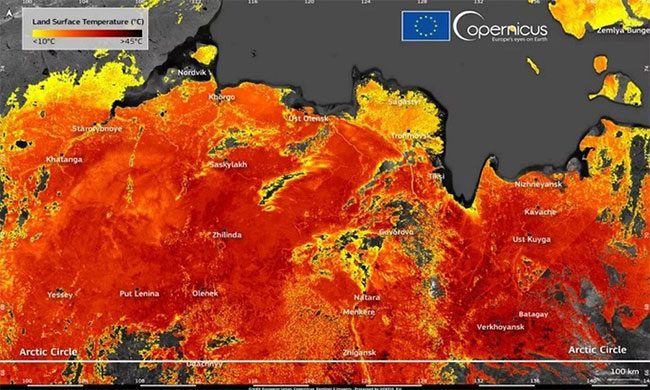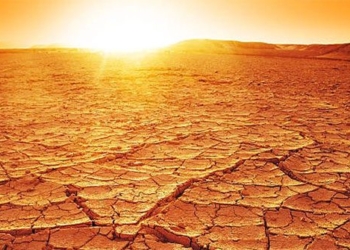Satellite images from the Copernicus Sentinel of the European Space Agency reveal unexpectedly high surface temperatures in at least one area of Siberia on June 20.

Image from June 20 reveals a heatwave in Siberia (the redder the color, the higher the temperature). (Photo: European Union).
While many cities on the west coast of the United States, such as Phoenix and Salt Lake City, have been experiencing prolonged hot weather over the past week, a similar situation is occurring in the Arctic Circle. A temperature of 48 degrees Celsius was recorded in the town of Verkhojansk in the Republic of Yakutia, eastern Siberia, according to data from the Copernicus Sentinel-3A and Sentinel-3B satellites. Other temperatures in the region include 43 degrees Celsius in Govorovo and 37 degrees Celsius in Saskylah, the highest since 1936. These temperatures refer to ground temperatures, not air temperatures. The air temperature in Verkhojansk is 30 degrees Celsius.
The high temperatures are affecting the permafrost, a layer of frozen ground that has held significant greenhouse gases for ages. As it melts, this layer releases methane gas into the atmosphere.
In addition to the adverse effects of increasing greenhouse gases in the atmosphere, the melting of permafrost also destabilizes the ground in Siberia, undermining the foundations of structures and leading to landslides. This phenomenon also contributes to the exposure of many frozen Pleistocene mammal remains, forcing paleontologists to work quickly to study species that thrived when the planet was cooler.
The area previously experienced a heatwave that reached temperatures of 38 degrees Celsius a year ago. The World Meteorological Organization (WMO) is monitoring rising temperatures across the globe. According to the organization, the most significant changes are occurring in the Arctic, which is warming at more than twice the global average rate.




















































